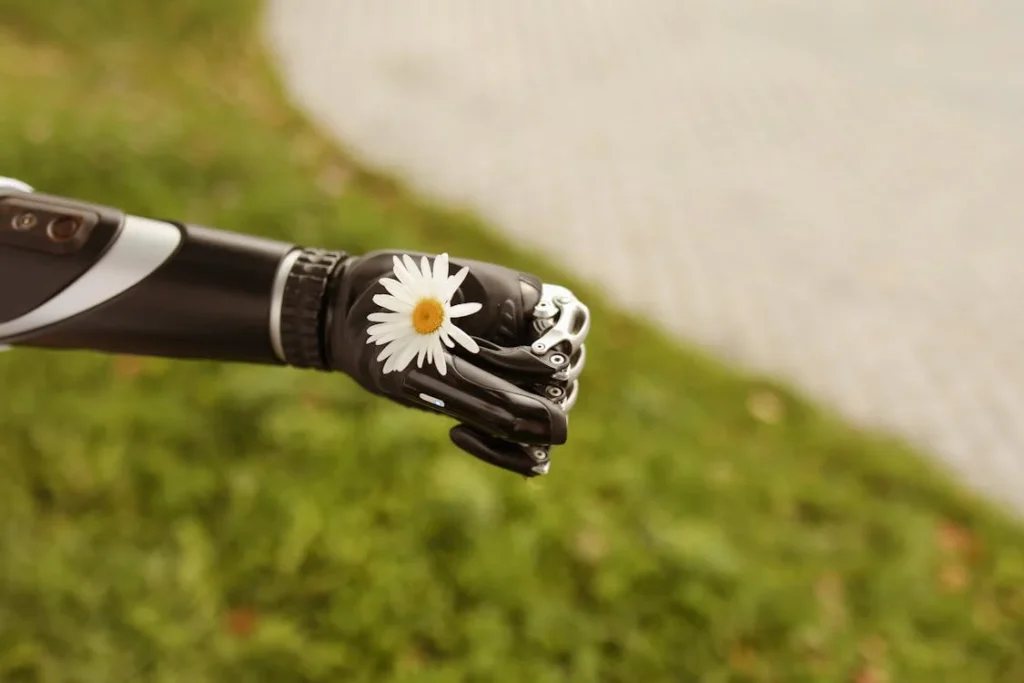Prosthetic care is essential all year round, but seasonal changes bring unique challenges that require special attention. During summer, heat, sweat, and humidity can impact both your comfort and the condition of your prosthetic.
In winter, colder temperatures and dryness can affect materials, fit, and skin health. Understanding how to care for your prosthetic during these contrasting seasons ensures that it remains functional, comfortable, and durable no matter the weather.
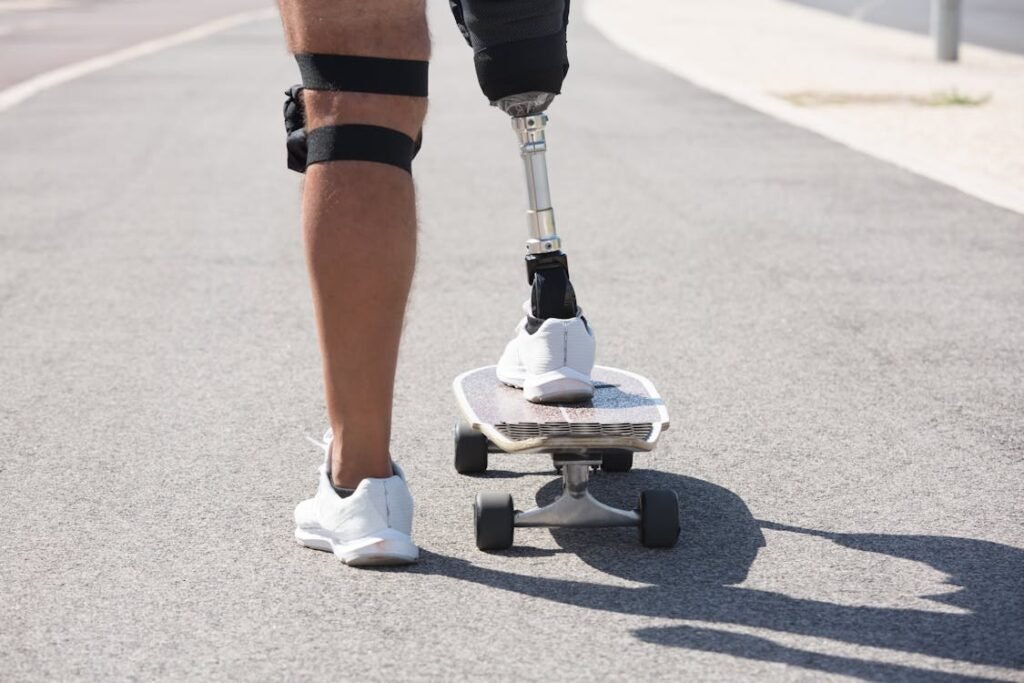
Summer Prosthetic Care: Staying Cool and Comfortable
The summer months bring heat, humidity, and increased activity levels, which can create challenges for prosthetic wearers. Managing sweat, skin irritation, and exposure to sunlight is essential to ensure your prosthetic remains comfortable and functional throughout the season.
Managing Sweat and Moisture
Sweating is a natural response to heat, but it can lead to discomfort and hygiene concerns when wearing a prosthetic. Excess moisture can cause skin irritation, slippery sockets, and bacterial buildup inside liners.
To manage sweat effectively, ensure your prosthetic liner is made from breathable, moisture-wicking materials. These fabrics help draw sweat away from your skin, keeping you dry and reducing the risk of irritation.
Daily cleaning of both your skin and prosthetic liner is especially important during the summer. Use a gentle, unscented cleanser to wash the liner, and allow it to air dry completely before reusing it.
For your skin, applying a prosthetic-compatible antiperspirant can minimize excessive sweating, but avoid products containing strong chemicals that may cause irritation.
Protecting Against UV Damage
Prosthetic materials, particularly silicone and plastic, can degrade with prolonged exposure to UV rays. Sunlight can cause fading, discoloration, and weakening of your prosthetic’s surface, affecting its appearance and durability.
To protect against UV damage, consider using a protective cover or sleeve when outdoors for extended periods.
Applying a UV-protective spray designed for prosthetics adds an extra layer of defense. This simple step helps preserve the prosthetic’s surface while allowing you to enjoy outdoor activities without worry.
Storing your prosthetic in a shaded or cool area when not in use prevents unnecessary sun exposure.
Maintaining Skin Health in Heat
Hot weather can increase the risk of skin irritation and sores, especially in areas where the prosthetic socket contacts the skin. Regularly checking your skin for redness, blisters, or unusual discomfort allows you to address issues early.
Clean and moisturize your skin daily to maintain its health, but choose lightweight, non-greasy moisturizers to avoid clogging pores in humid conditions.
If irritation occurs, switching to a softer liner or adjusting the prosthetic fit may help alleviate pressure points. For users in tropical climates, incorporating breathable liners and sweat-absorbing socks into your routine enhances comfort during the hottest months.

Winter Prosthetic Care: Staying Warm and Protected
Winter presents its own set of challenges for prosthetic wearers, from cold weather affecting material flexibility to dry air impacting skin health. With thoughtful care, you can keep your prosthetic functioning smoothly and stay comfortable during the chilly months.
Preventing Cold-Related Stiffness
Cold temperatures can cause certain prosthetic materials, such as plastics and carbon fiber, to become stiff or brittle. This can reduce the functionality of joints and moving parts, making it harder to achieve smooth, natural movements.
To counteract this, ensure your prosthetic is properly lubricated using a prosthetic-safe lubricant before heading out into freezing weather.
Warming up the prosthetic slightly before use can also help maintain flexibility. Storing your prosthetic in a warm area overnight prevents it from becoming excessively cold and stiff.
For users engaging in outdoor winter sports or activities, consider prosthetic models specifically designed to handle extreme conditions.
Protecting Against Moisture from Snow and Rain
Winter weather often brings snow, rain, and slush, which can introduce moisture to your prosthetic. Excessive exposure to water or damp conditions can weaken materials, damage electronic components, or create an environment for bacterial growth.
Waterproof covers are an excellent solution for protecting your prosthetic in wet or snowy conditions.
Ensure that all components, particularly those with moving parts or electronic systems, are thoroughly dried after exposure to moisture.
Wiping your prosthetic with a soft, dry cloth immediately after coming indoors helps prevent lingering dampness. For devices with electronic components, storing them with silica gel packets can help absorb residual moisture and protect sensitive areas.
Maintaining Skin Health in Dry Conditions
The cold, dry air of winter can take a toll on your skin, particularly in areas where the prosthetic socket comes into contact with your body. Dry skin can crack or become irritated, making it uncomfortable to wear your prosthetic for long periods.
Applying a thick, fragrance-free moisturizer at night can help keep your skin hydrated and resilient against dryness.
Regularly inspect your skin for signs of chafing or redness caused by friction. Using a soft, cushioned liner can reduce the risk of irritation, while a prosthetist can help adjust the fit of your device if discomfort persists.
For individuals who experience swelling due to cold-induced poor circulation, wearing compression socks under your prosthetic can provide relief and improve overall comfort.
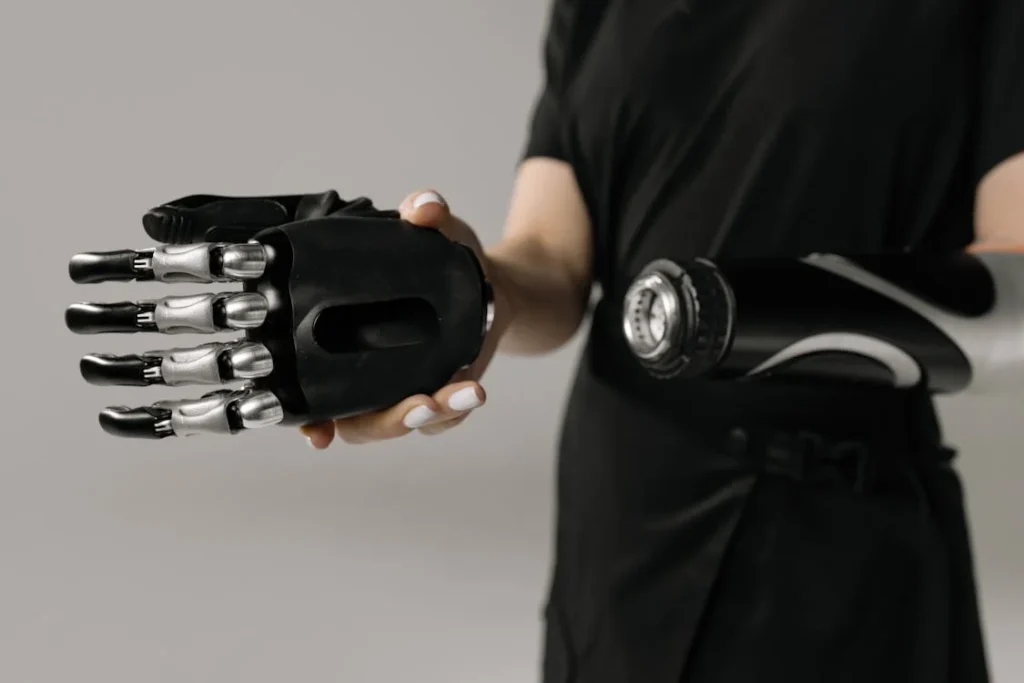
Adapting to Seasonal Activity Changes
Seasonal changes bring shifts in how you interact with your prosthetic, whether through varying activity levels, environmental conditions, or adjustments to daily routines.
These shifts demand proactive care and strategies to ensure your prosthetic remains comfortable, functional, and suited to your lifestyle year-round.
By adapting your approach to activity during summer and winter, you can maximize your prosthetic’s performance while minimizing the risks of wear and discomfort.
Responding to Increased Summer Activity
Summer often inspires greater physical activity, from outdoor adventures to social gatherings. These activities can lead to more sweat, heightened exposure to the elements, and greater demands on your prosthetic.
To adapt, prioritize strategies that prevent sweat buildup, such as wearing breathable liners or using antiperspirants approved for prosthetic use.
Regularly cleaning your prosthetic, especially after periods of intense activity, helps remove sweat and dirt, reducing the risk of skin irritation and material degradation.
For water-based activities like swimming or beach outings, waterproof prosthetics or protective covers are essential. These ensure your prosthetic remains shielded from potential damage caused by saltwater, chlorine, or moisture buildup.
Consult your prosthetist about activity-specific adjustments, such as modifying alignment or using specialized components that enhance durability and performance during active months.
Navigating Winter Activity Adjustments
Winter brings its own set of activity changes, often involving lower outdoor activity levels or participation in winter sports. Reduced activity can lead to changes in the residual limb, such as reduced muscle tone or altered limb volume.
To counteract this, incorporate light exercises or stretching routines to maintain limb strength and flexibility. Regular check-ins with your prosthetist ensure your prosthetic’s fit adapts to any physical changes during the colder months.
For those embracing winter sports like skiing or snowboarding, your prosthetic must be equipped to handle impact and extreme cold. High-performance prosthetics or custom modifications can provide the stability and durability required for these activities.
Ensuring your prosthetic is properly insulated and lubricated prevents cold-related stiffness, allowing for smoother movement during these high-energy pursuits.
Balancing Seasonal Activity Demands
Regardless of the season, the key to adapting is understanding how your environment and activities interact with your prosthetic. In summer, staying cool and managing sweat are priorities, while winter calls for protection against cold and moisture.
Aligning your prosthetic care routine with these needs ensures that you’re prepared for whatever the season brings.
Businesses can support users by offering seasonal consultations, during which prosthetists provide personalized advice on adjustments, care routines, and accessories tailored to their specific activities.
By addressing the unique demands of each season, users can confidently engage in their favorite activities while ensuring their prosthetic remains a reliable companion throughout the year.
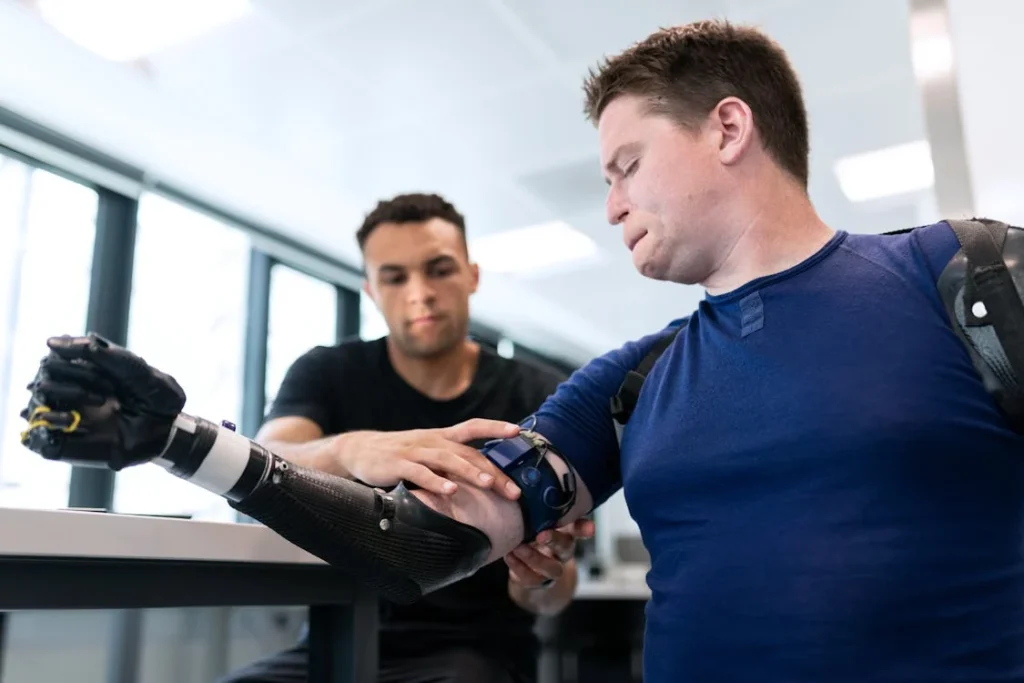
Professional Maintenance for Year-Round Care
Professional maintenance is the cornerstone of ensuring that your prosthetic continues to perform optimally, regardless of the season.
While daily care routines address surface-level needs, professional inspections and adjustments delve deeper, identifying issues that may not be immediately visible.
By incorporating professional maintenance into your seasonal care plan, you can prevent minor problems from escalating, adapt your prosthetic to environmental changes, and maintain both functionality and aesthetics.
Seasonal-Specific Inspections
Each season presents unique challenges that require targeted inspections. During summer, professional maintenance focuses on addressing UV damage, liner wear, and moisture-related concerns.
Your prosthetist can check for signs of discoloration, cracks, or weakening adhesives caused by prolonged exposure to heat and sunlight. Regular liner replacements may also be recommended to manage the increased sweat and bacterial growth common in warmer months.
In winter, the focus shifts to mitigating damage caused by cold and dryness. Cold temperatures can lead to stiff joints or brittle materials, while dry air can cause discomfort or irritation in skin-contact areas.
Your prosthetist can apply specialized lubricants, replace worn-out components, or adjust the fit to account for any swelling or shrinking of the residual limb due to temperature changes.
Advanced Diagnostics and Repairs
Professional maintenance isn’t limited to inspections; it often involves advanced diagnostics to assess the internal condition of your prosthetic.
Using tools like motion analysis systems or joint torque meters, prosthetists can detect subtle misalignments or mechanical inefficiencies that might go unnoticed in daily use. Identifying these issues early ensures they’re addressed before they affect your comfort or mobility.
If your prosthetic has experienced wear or damage, professional repairs restore its functionality and appearance.
For instance, refinishing services can eliminate surface scratches or discoloration caused by seasonal exposure, while recalibration of joints ensures smooth movement even in extreme weather conditions.
Adapting to Changing Needs
Your activity levels and lifestyle often change with the seasons, and professional maintenance ensures your prosthetic adapts accordingly.
In summer, prosthetists can recommend modifications or accessories to support increased physical activity, such as waterproof covers for swimming or breathable liners for outdoor sports.
In winter, they can equip your prosthetic with thermal sleeves or reinforced components for snow-based activities or extended periods in cold environments.
For users who experience physical changes like weight fluctuations or limb volume shifts due to seasonal conditions, prosthetists can adjust the socket fit or suggest alignment corrections.
These proactive measures help maintain comfort and stability while preventing potential skin irritation or pressure sores.
Partnering with Users for Ongoing Care
Professional maintenance is most effective when paired with ongoing communication between the user and their prosthetist.
Seasonal follow-ups create an opportunity for users to discuss any challenges they’ve encountered, from discomfort to material wear. Prosthetists can offer tailored advice and make recommendations that align with the user’s evolving needs.
For businesses, creating year-round maintenance packages that include seasonal check-ups, liner replacements, and refinishing services fosters a sense of reliability and trust.
Providing educational resources, such as videos or care guides, ensures users feel empowered to complement professional maintenance with effective at-home routines.
Maximizing the Value of Professional Maintenance
The value of professional maintenance extends beyond immediate repairs or adjustments. Regular care enhances the durability of your prosthetic, minimizing the risk of costly replacements or extensive repairs in the future.
It also provides peace of mind, knowing that your prosthetic is ready to handle the demands of any season.
By collaborating with your prosthetist to develop a personalized care plan, you can ensure your prosthetic remains a dependable part of your life, no matter the weather.
Businesses that emphasize the importance of professional maintenance not only help users preserve their prosthetics but also create a lasting bond of support and trust.

Staying Comfortable in Extreme Conditions
Extreme weather, whether blistering summer heat or biting winter cold, can challenge the comfort and functionality of prosthetic devices.
Maintaining comfort in these conditions requires a combination of proactive care, adaptable accessories, and awareness of how weather impacts both the prosthetic and the residual limb.
By taking specific steps tailored to extreme environments, you can ensure your prosthetic supports you through every season.
Managing Heat and Humidity
In scorching summer conditions, maintaining comfort often begins with managing the effects of heat and humidity. Excessive sweating can make prosthetics feel slippery or unstable, increasing the risk of irritation and discomfort.
Using moisture-wicking liners specifically designed for hot climates can help keep your skin dry and reduce the buildup of sweat.
Regular cleaning becomes even more critical in high heat. Sweat and oils can accumulate quickly, leading to odors and bacterial growth.
Cleaning the prosthetic and liner daily with mild soap and ensuring both are thoroughly dried before reassembly minimizes these risks. Using antiperspirants approved for prosthetic use can also provide additional protection against excessive sweating.
UV exposure is another factor to consider during extreme heat. Direct sunlight can weaken materials or cause discoloration over time.
Applying a UV-protective spray or using a prosthetic cover designed to shield against sunlight ensures that your device remains in top condition.
Staying Warm in Extreme Cold
Freezing temperatures present a different set of challenges, particularly for the materials and components of your prosthetic. In the cold, plastics, silicone, and carbon fiber may become stiff or brittle, reducing their flexibility and comfort.
Pre-warming your prosthetic indoors before venturing out can help maintain its pliability and functionality.
Thermal liners and insulated sleeves are essential accessories in extreme cold. They not only keep your residual limb warm but also prevent the prosthetic from drawing heat away from your body.
This added insulation minimizes discomfort and helps maintain a secure fit, as cold can cause the residual limb to shrink slightly.
For users with electronic prosthetics, extreme cold can affect battery performance. Keeping batteries warm by using insulated covers or carrying a spare in an inner pocket can help ensure the device operates reliably in low temperatures.
Preventing Skin Irritation in Harsh Weather
Extreme conditions, whether hot or cold, can increase the risk of skin irritation. In summer, friction caused by sweat or swelling can lead to chafing, while in winter, dry air can cause the skin to crack or become overly sensitive.
Regularly moisturizing your residual limb with a prosthetic-compatible cream helps combat dryness and maintain healthy skin.
In both seasons, monitoring your skin for signs of irritation or pressure sores is critical. Addressing minor discomforts early prevents them from developing into more serious issues.
For persistent irritation, consulting a prosthetist to adjust the fit or recommend a new liner can restore comfort.
Adapting Activity Levels
Extreme weather often influences activity levels, which can impact your prosthetic’s performance and your comfort. In summer, increased outdoor activities may expose your prosthetic to sweat, dirt, and water, necessitating more frequent cleaning and maintenance.
Meanwhile, reduced activity during winter can lead to stiffness or loss of muscle tone in your residual limb, affecting the fit of your prosthetic.
Staying active in extreme weather requires thoughtful planning. In summer, cooling accessories like sweat bands or breathable liners can enhance comfort during outdoor activities.
In winter, regular exercise indoors helps maintain muscle tone and circulation, reducing the risk of a loose or uncomfortable fit.
Professional Support for Extreme Weather
Extreme conditions can exacerbate existing issues or create new challenges that require professional assistance. Scheduling seasonal check-ups with your prosthetist ensures that your prosthetic is ready to handle harsh weather.
These appointments allow for adjustments, such as recalibrating joints stiffened by cold or replacing worn liners impacted by heat and humidity.
For businesses, offering seasonal maintenance packages or specialized accessories for extreme weather can help users feel supported and prepared. By proactively addressing weather-related concerns, you reinforce your commitment to user well-being and long-term satisfaction.
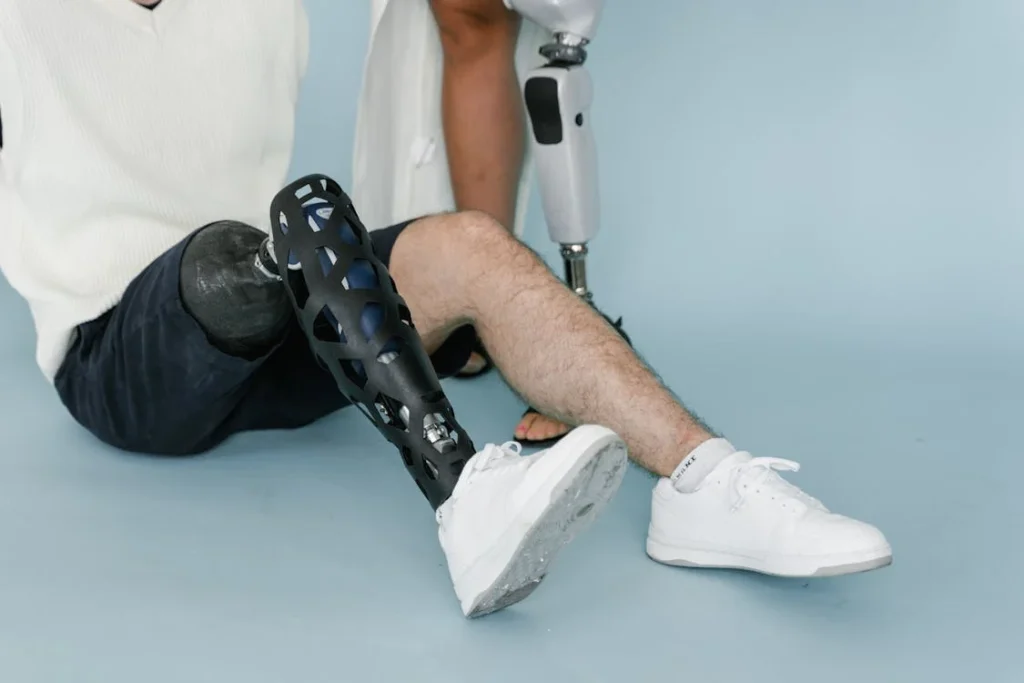
Handling Seasonal Wear and Tear
Seasonal changes, whether it’s the scorching heat of summer or the frigid chill of winter, can accelerate wear and tear on your prosthetic device.
These environmental stresses can affect the materials, joints, and overall functionality of the prosthetic, requiring targeted care and preventative strategies to maintain its condition.
Understanding how different seasons impact your prosthetic allows you to take proactive steps, ensuring durability and performance year-round.
The Impact of Heat on Prosthetic Materials
During summer, high temperatures can weaken adhesives, warp plastics, or cause certain materials, such as silicone or rubber, to soften. This can result in compromised fit, loosened components, or reduced comfort.
If left unaddressed, prolonged exposure to extreme heat may cause permanent damage to the prosthetic’s structural integrity.
To mitigate these risks, avoid leaving your prosthetic in hot environments, such as inside a parked car or under direct sunlight for extended periods.
Storing your device in a cool, shaded place when not in use is an effective way to prevent heat-related wear. For added protection, using a thermal protective cover helps shield the prosthetic from direct heat exposure during outdoor activities.
Regular inspections during the summer are essential. Check for signs of warping, discoloration, or weakening adhesives, particularly in areas where different materials are bonded together.
Early detection allows you to address minor issues before they escalate into more significant damage.
Cold Weather and Material Brittleness
Winter conditions present unique challenges, as cold temperatures can make some prosthetic materials brittle and prone to cracking. This is especially true for components like plastic sockets, carbon fiber reinforcements, and rubber seals.
Cold weather may also reduce the flexibility of moving parts, leading to stiffness and reduced functionality.
Prevention begins with proper preparation. Warming up your prosthetic indoors before stepping into freezing temperatures helps maintain material flexibility and prevents cold-induced brittleness.
Applying a prosthetic-safe lubricant to joints and moving parts ensures smooth operation despite the cold.
Regularly inspect your prosthetic for signs of cracks, especially around high-stress areas like joints and sockets. For electronic prosthetics, check battery performance, as low temperatures can drain power more quickly.
Storing a spare battery in a warm place, such as an inner jacket pocket, ensures uninterrupted functionality during cold-weather outings.
Wear and Tear from Increased Activity
Seasonal activities, whether it’s hiking during summer or skiing in winter, place additional strain on prosthetics, leading to faster wear of certain components.
Increased movement and environmental exposure can cause joint friction, liner degradation, or scuffing of outer surfaces. Adapting your prosthetic to these activities by using specialized accessories or protective covers can significantly reduce wear and tear.
For summer adventures, waterproof or sweat-resistant components help manage the effects of moisture, while durable liners designed for high-impact activities provide better cushioning and support.
In winter, reinforced prosthetics or covers built for snow and ice ensure durability during high-stress sports or outdoor activities.
Proactive Care for Long-Term Durability
Addressing seasonal wear and tear starts with a proactive care routine. Cleaning your prosthetic daily to remove dirt, sweat, or salt residue from winter slush prevents surface damage and preserves material integrity.
Seasonal deep cleaning sessions help remove embedded debris, ensuring that joints and sockets remain smooth and functional.
Scheduling seasonal maintenance with your prosthetist ensures professional oversight. These appointments allow for thorough inspections, adjustments, and the replacement of worn components like liners or seals.
Discussing your seasonal activities with your prosthetist also helps tailor maintenance recommendations to your specific lifestyle needs.
Investing in High-Quality Materials
For users in environments with extreme seasonal variations, choosing prosthetics made from high-quality materials designed for durability is critical.
Advanced materials like titanium, medical-grade silicone, or carbon fiber are better equipped to handle seasonal stresses than traditional materials.
Additionally, components with built-in UV resistance or cold-weather flexibility offer enhanced protection against environmental wear.
For businesses, educating users about material options and offering upgrades tailored to their climate and activity levels builds trust and ensures better long-term outcomes.
Highlighting the benefits of investing in robust materials helps users understand the value of durability over time.
Supporting Users Through Seasonal Challenges
Seasonal wear and tear can be daunting, but with proper care and professional support, users can navigate these challenges confidently.
Businesses can provide additional value by offering seasonal care packages that include protective accessories, tailored maintenance services, and educational resources.
Regular communication, such as reminders for seasonal check-ups or care tips, helps users stay proactive and reinforces your commitment to their well-being.
By addressing the specific needs of summer and winter, users can maintain their prosthetic’s performance and appearance, ensuring it remains a reliable part of their life regardless of the season.
Conclusion
Seasonal changes bring unique challenges for prosthetic care, but with the right strategies, you can keep your prosthetic comfortable, functional, and durable throughout the year. In summer, managing heat, sweat, and UV exposure is essential, while winter requires attention to cold-induced stiffness, dryness, and moisture protection. Adapting your daily care routine, using seasonal accessories, and scheduling regular professional maintenance ensures that your prosthetic meets the demands of every season.
At Robobionics, we understand that prosthetic care isn’t one-size-fits-all. That’s why we’re committed to providing personalized solutions, advanced materials, and expert support to help you thrive in any environment. By staying proactive and informed, you can protect your prosthetic from seasonal wear and tear, ensuring it remains a reliable part of your journey toward independence and confidence.
Need help preparing your prosthetic for the seasons? Contact Robobionics today for expert guidance and services tailored to your needs.



